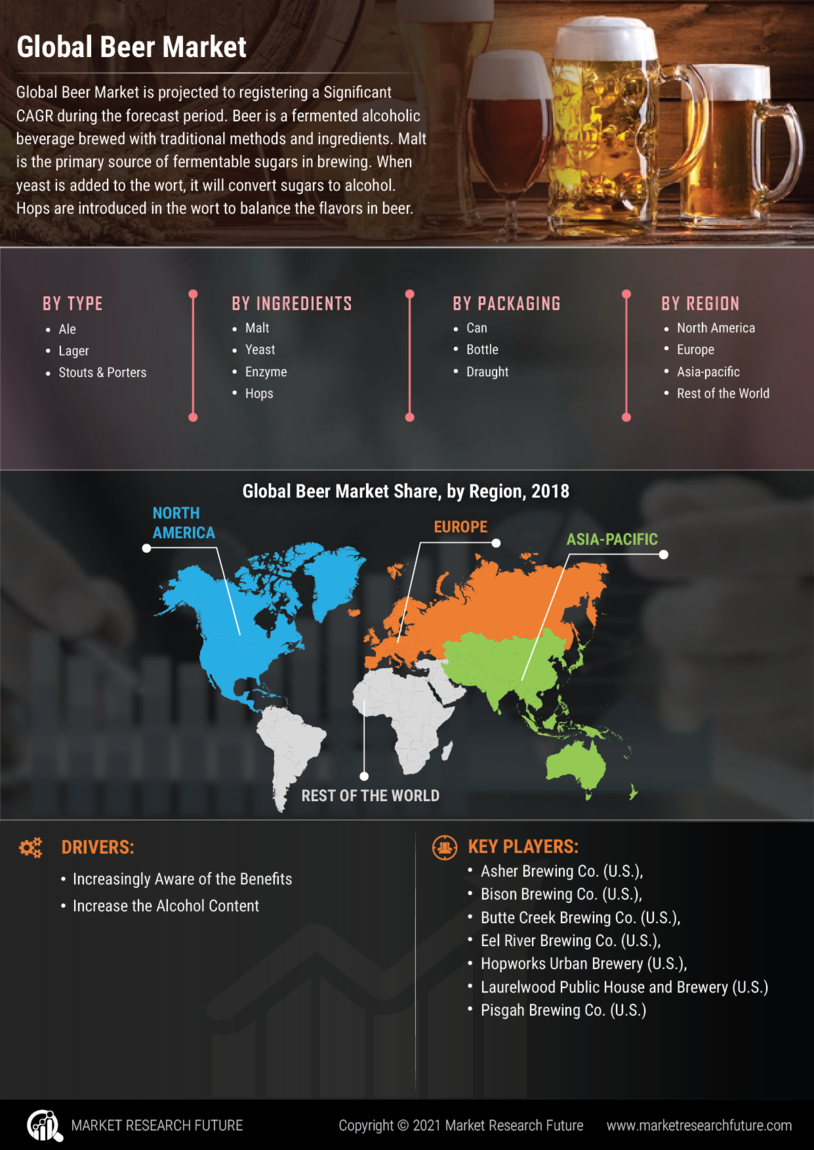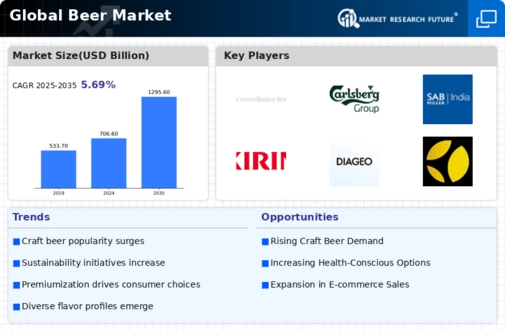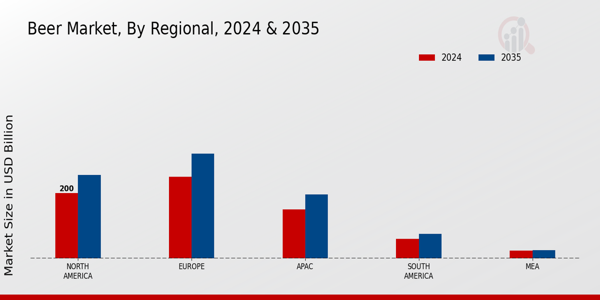Rising Global Consumption
The Global Beer Market Industry experiences a notable increase in consumption, driven by changing consumer preferences and a growing appreciation for craft beers. In 2024, the market is valued at approximately 706.6 USD Billion, reflecting a robust demand for diverse beer offerings. As consumers seek unique flavors and local brews, craft breweries are flourishing, contributing to this growth. The trend towards premiumization, where consumers are willing to pay more for quality products, further supports this expansion. This shift in consumption patterns indicates a dynamic landscape within the Global Beer Market Industry, suggesting that the demand for innovative and high-quality beers will continue to rise.
Health and Wellness Trends
The Global Beer Market Industry is increasingly shaped by health and wellness trends, as consumers become more health-conscious. This shift has led to the emergence of low-calorie and alcohol-free beer options, appealing to a demographic that seeks healthier lifestyle choices without sacrificing social experiences. Breweries are responding to this demand by developing products that align with these preferences, thereby capturing a broader audience. The introduction of these innovative products indicates a potential for growth within the market, as health-oriented consumers may drive sales in the coming years. This trend suggests that the Global Beer Market Industry will continue to evolve, adapting to changing consumer values.
Expansion of Craft Breweries
The proliferation of craft breweries significantly influences the Global Beer Market Industry, as these establishments cater to a growing consumer base that values authenticity and local production. The craft beer segment has expanded rapidly, with thousands of new breweries emerging globally. This trend not only diversifies the market but also fosters competition among traditional beer producers. The craft beer movement encourages innovation in brewing techniques and flavor profiles, appealing to adventurous consumers. As a result, the craft beer segment is projected to contribute substantially to the overall market growth, potentially enhancing the market's value to 1295.6 USD Billion by 2035.
Market Trends and Projections
The Global Beer Market Industry is characterized by various trends and projections that illustrate its dynamic nature. The market is expected to grow from 706.6 USD Billion in 2024 to an estimated 1295.6 USD Billion by 2035, reflecting a robust CAGR of 5.67% during the period from 2025 to 2035. This growth trajectory suggests that the industry is adapting to evolving consumer preferences, technological advancements, and emerging markets. The increasing demand for craft beers, health-conscious options, and innovative brewing techniques are likely to shape the future landscape of the Global Beer Market Industry, indicating a vibrant and competitive environment.
Emerging Markets and Globalization
Emerging markets present significant opportunities for growth within the Global Beer Market Industry, as rising disposable incomes and changing lifestyles drive beer consumption. Countries in Asia, Africa, and Latin America are witnessing a surge in demand for beer, influenced by globalization and the increasing popularity of Western drinking cultures. As these markets expand, international breweries are likely to invest in local production facilities to cater to regional tastes and preferences. This strategic approach not only enhances market penetration but also fosters brand loyalty among consumers. The potential for growth in these emerging markets indicates a promising trajectory for the Global Beer Market Industry.
Technological Advancements in Brewing
Technological advancements play a crucial role in the evolution of the Global Beer Market Industry, enhancing production efficiency and product quality. Innovations such as automation in brewing processes and advancements in fermentation technology allow breweries to produce beer at a larger scale while maintaining consistency. These improvements not only reduce operational costs but also enable the introduction of new flavors and styles, catering to diverse consumer preferences. As breweries adopt these technologies, they may experience increased profitability and market share, further contributing to the industry's projected CAGR of 5.67% from 2025 to 2035. This technological integration suggests a promising future for the Global Beer Market Industry.




















